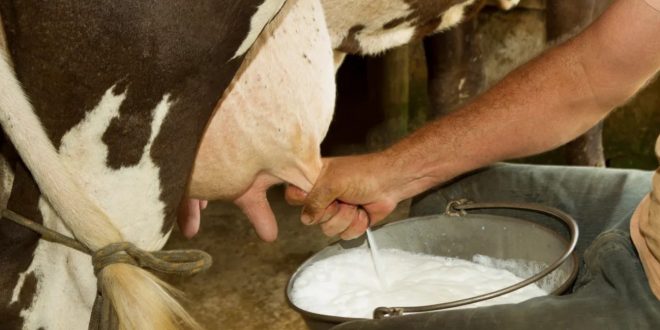Brazilian scientists have successfully genetically modified a cow to secrete human insulin in her milk, marking a significant milestone as the first transgenic cow to achieve this remarkable feat. Although still distant, the researchers anticipate that this bovine advancement might facilitate sustainable insulin manufacturing and address global insulin supply challenges.
Currently, the accomplishment is only a demonstration of the idea, but with more experimentation and permission from the Food and Drug Administration (FDA), it has the potential to be expanded to compete with existing techniques for producing insulin, which rely on genetically modified yeast and bacteria.
Mother Nature designed the mammary gland to be a very effective protein-synthesis facility. “We can utilize that system to generate a protein that has the potential to benefit a vast number of individuals globally,” said Professor Matt Wheeler, the primary author of a report detailing the progress.
Wheeler et al. created the transgenic cow by inserting a human DNA fragment encoding proinsulin, the protein precursor of insulin, into the nuclei of ten cow embryos. Subsequently, these altered embryos were surgically placed into the uteruses of healthy cows, resulting in the birth of a viable, genetically modified calf.
Although encountering difficulties in achieving pregnancy in the mature cow, the team successfully stimulated lactation through the administration of hormones. This resulted in a reduced amount of milk compared to what would be produced during pregnancy. However, the milk that was produced did include human proinsulin and, to the team’s astonishment, insulin.
“Our objective was to synthesize proinsulin, isolate it as insulin, and proceed accordingly.” However, the cow autonomously digested it. According to Wheeler, she produces around three to one physiologically active insulin, or proinsulin.
The genetic engineering approach used specifically targeted the expression of human insulin in mammary tissue only, without its presence in any other part of the cow.
In order to use insulin and proinsulin, it is necessary to extract and purify them beforehand. Given the possibility of doing this, Wheeler suggests that if each cow were capable of producing 1 gram (0.04 ounces) of insulin per liter of milk, the system would have the capacity to generate a substantial amount of insulin.
According to Wheeler, a standard unit of insulin is 0.0347 milligrams (0.000001 ounces), indicating that each gram is equal to 28,818 units of insulin. “And that is merely one liter; Holsteins have the capacity to generate 50 liters on a daily basis.” You are capable of doing the calculations.
The researchers now want to do a re-cloning procedure on the cow, with the ultimate goal of establishing a whole transgenic herd. According to them, this has the potential to eventually provide insulin to the vast number of individuals worldwide who suffer from diabetes.
Although now unattainable, Wheeler maintains a positive outlook: “I envision a future in which a herd of 100 animals, comparable to a modest dairy in Illinois or Wisconsin, could generate the entirety of the nation’s insulin requirements,” he said. “And a more extensive flock?” It is possible to produce the global supply within a span of one year.
The publication of the work may be found in the Biotechnology Journal.
 Tech Gadget Central Latest Tech News and Reviews
Tech Gadget Central Latest Tech News and Reviews




